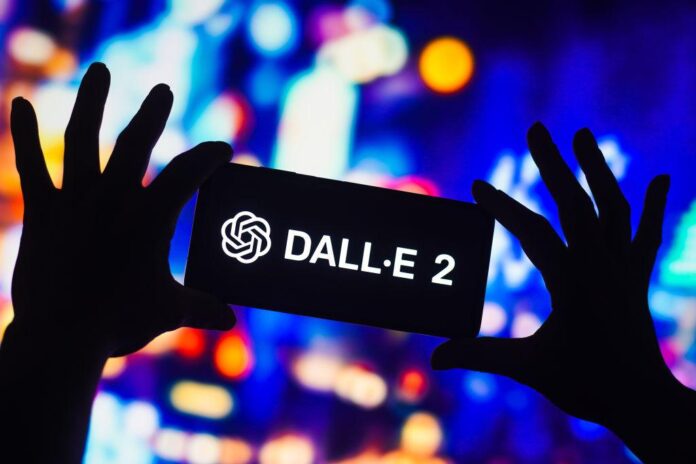Budding digital artists wanting to try their hand at making A.I.-generated work will now have full access to the text-to-image generator DALL-E, OpenAI announced yesterday.
Up until now, DALL-E, the second version of which launched in April, has only been accessible via a waitlist. The company has attributed its slow rollout to concerns about how to responsibly scale such a powerful system that could be vulnerable to misuse.
In July, OpenAI released DALL-E in beta, making it available to 1 million people from the waitlist. These lucky users were given 50 free credits followed by a further 15 free credits each month, with the option to purchase more. Each credit could be traded for one prompt generation, which would return four images, or an edit or variation of a generated image, returning three more images.

DALL-E’s output from the prompt: “A writer from Artnet uses the computer to generate new artworks.” Image by Jo × DALL·E.
In the meantime, OpenAI had been developing and implementing filters for offensive, sexual, or violent content. Now, DALL-E in beta is available to anyone willing to sign up through the same credit system.
The research lab, which was co-founded by Elon Musk, also revealed that more than 1.5 million users are now using DALL-E every day to create more than 2 million images. This amounts to a mind-boggling quantity of new imagery, all entirely imagined by A.I., flooding the internet.
Unsurprisingly, this revolution in how we make images, which is already being incorporated into the practices of artists, creative directors, and designers, has sparked heated debate. The full implications of the tool—on commercial illustration, visual art, and other fields—remain unclear. Getty Images is one of the latest and biggest platforms to ban A.I.-generated content over concerns about the copyright.

DALL-E’s output from the prompt: “An artist uses AI to make artworks.” Image by Jo × DALL·E.
OpenAI, however, is happy to encourage creative uses of DALL-E, even introducing a new “outpainting” feature in August, which asks the A.I. to imagine what images look like beyond their borders. Artnet News recently tried using the tool on some art-historical masterpieces.
Despite becoming more easily accessible to the public, DALL-E is still not yet open source like some other text-to-image generators. Stable Diffusion, for example, is one of the preferred models for artists who like to get under the hood of the code they use to make art.
For now, OpenAI says it is in the process of testing a new DALL-E API that would allow developers and businesses to build apps on top of the system.

























